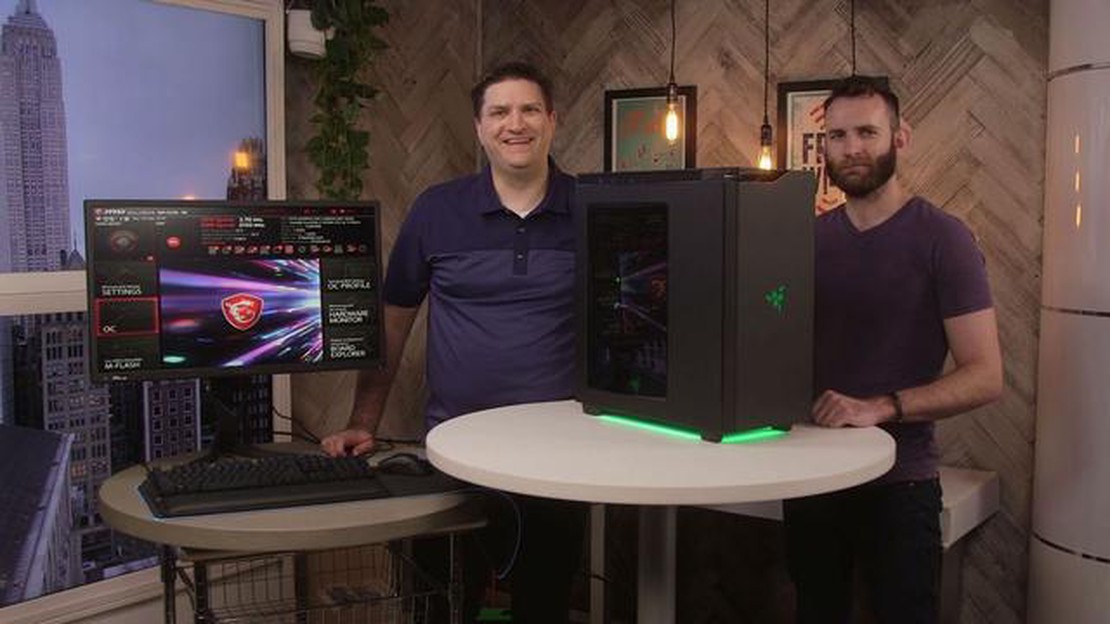Top Tips for Maintaining Servers in Brawl Stars
Servers in Maintenance Brawl Stars If you’re an avid player of Brawl Stars, you know how important it is to have servers that are running smoothly. …
Read Article
Building your own gaming PC can be a rewarding and satisfying experience. By customizing your PC to your specific needs, you can create a powerful machine that delivers exceptional gaming performance. In this step-by-step guide, we will take you through the process of building your own gaming PC, from choosing the right components to assembling them together.
1. Planning Your Build: The first step in building your own gaming PC is to plan your build. Consider your budget, the type of games you want to play, and the desired performance level. Research the latest hardware and components available in the market to make informed decisions.
2. Choosing the Right Components: Once you have a clear idea of what you want, it’s time to choose the right components for your gaming PC. This includes selecting a suitable CPU, GPU, RAM, storage devices, and power supply. Each component should be compatible with the others to ensure smooth functionality.
3. Assembling Your Gaming PC: With all the components in hand, it’s time to assemble your gaming PC. Follow the manufacturer’s instructions for each component, ensuring you secure them properly. Take care when handling sensitive components such as the CPU and GPU, and make sure to apply thermal paste for optimal heat dissipation.
4. Installing the Operating System: Once your gaming PC is assembled, it’s time to install the operating system. This can be done using a bootable USB drive or a DVD. Follow the prompts on the screen, and make sure to install the necessary drivers and updates to ensure compatibility with your hardware.
5. Testing and Troubleshooting: After installing the operating system, it’s important to test your gaming PC for performance and stability. Run benchmarking software to ensure all components are functioning correctly and monitor the temperature to prevent overheating. If any issues arise, troubleshoot them accordingly.
Read Also: Step-by-Step Guide: How to Build a Barn in Minecraft - Minecraft Barn Building Tutorial
By following these step-by-step instructions, you can build your own gaming PC and unleash the full potential of your gaming experience. Take your time during each step, and don’t hesitate to seek assistance if needed. With the right components and proper assembly, you can create a gaming PC that meets your specific needs and delivers exceptional performance.
Building your own gaming PC can be a rewarding experience that allows you to customize your gaming rig to your specific needs and preferences. Follow these step-by-step instructions to build your own gaming PC:
Building your own gaming PC can be a fun and rewarding process. By following these step-by-step instructions, you can create a custom gaming rig that meets your gaming needs and provides an enhanced gaming experience.
Building your own gaming PC can be an exciting and rewarding experience. To help you get started, here are some ultimate tips to keep in mind:
Remember, building a gaming PC requires patience and attention to detail. By following these ultimate tips, you can create a high-performance gaming rig customized to your needs.
The minimum specifications for building a gaming PC include a processor (CPU) with at least four cores, a dedicated graphics card (GPU) with at least 4GB of video memory, at least 8GB of RAM, and a storage drive with at least 500GB of space.
Read Also: How to Defeat Cliff in Pokemon Go: Winning Strategies and Tips
No, you don’t necessarily need prior experience in building PCs to build a gaming PC. However, having some knowledge of computer hardware and the building process can be helpful. There are also plenty of online tutorials and guides available to assist beginners.
Building your own gaming PC has several advantages. Firstly, you have full control over the components used, allowing you to customize the PC to meet your specific needs. Secondly, you can usually save money by purchasing components individually rather than buying a pre-built PC. Finally, building your own PC can be a rewarding and educational experience.
To build a gaming PC, you will need a Phillips screwdriver, zip ties or Velcro straps for cable management, thermal paste for the CPU, and a grounding strap or mat to prevent static electricity from damaging the components. It’s also a good idea to have a clean and well-lit workspace.
The time it takes to build a gaming PC can vary depending on your previous experience and the complexity of the build. For beginners, it may take anywhere from a few hours to a full day. More experienced builders can usually complete a build in a couple of hours. It’s important to take your time and follow the instructions carefully to avoid any mistakes.
Servers in Maintenance Brawl Stars If you’re an avid player of Brawl Stars, you know how important it is to have servers that are running smoothly. …
Read ArticleWhen Is Apex Legends Mobile? Apex Legends, the popular battle royale game developed by Respawn Entertainment, has taken the gaming world by storm with …
Read ArticleHow To Pay Off House Loan Animal Crossing: New Horizons? One of the main goals in Animal Crossing: New Horizons is to pay off your house loan. As you …
Read ArticleHow Many Pokemon In Pokemon Go? In the world of Pokemon Go, the popular augmented reality game developed by Niantic and The Pokemon Company, players …
Read ArticleHow To Play Split Screen On Call Of Duty: Infinite Warfare Zombies? Are you ready to team up with a friend and take on the hordes of undead in Call of …
Read Article11 of the best games you can play offline Are you tired of constantly being connected to the internet to enjoy your favorite games? Look no further! …
Read Article